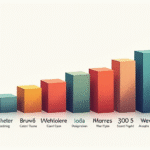Background on the Federal Reserve Bank of New York’s Credit Access Survey
The Federal Reserve Bank of New York recently released data on credit access, revealing that US households have demonstrated better behavior when applying for mortgage refinancing or car loans in June. This improvement is significant as it marks a decrease in rejection rates for both mortgage refinancing and car loans.
Mortgage Refinancing Rejection Rates Drop
According to the Fed, rejection rates for mortgage refinancing applications fell to 15% in June from 42% in February, the highest rejection rate since data collection began in autumn 2013.
Car Loan Rejection Rates Also Decrease
The rejection rate for car loans also decreased, albeit less dramatically, to 7.0% in June from 14% in February.
Stable Credit Application and Denial Rates
The Fed noted that credit application and denial rates have remained stable over the past year. These observations come from the Bank’s Consumer Expectations Survey, which is closely monitored for its monthly insights into inflation expectations and consumer sentiment.
Decrease in Discouraged Borrowers
The percentage of potential borrowers who refrained from applying for credit due to expected rejection, known as discouraged borrowers, decreased to 7.2% in June from 8.5% in February. Despite this decrease, the June figure was still higher than 5.5% in June 2024.
Increased Perception of Handling Unexpected Expenses
Survey respondents anticipated having a better ability to manage unexpected expenses of $2,000 in June, and their perceived capacity to cover such costs also increased.
Growing Consumer Debt Levels Amidst Healthy Conditions
While there is some growing tension in overall consumer debt levels, the current conditions are generally considered healthy. The automotive and real estate markets have faced high borrowing costs due to the Federal Reserve maintaining relatively high interest rates to combat inflation.
Key Questions and Answers
- What recent changes have been observed in US households’ credit-seeking behavior? US households have shown improved behavior when applying for mortgage refinancing or car loans, with lower rejection rates for both types of credit in June compared to February.
- How have mortgage refinancing rejection rates changed? Mortgage refinancing rejection rates dropped to 15% in June from 42% in February.
- What happened to car loan rejection rates? Car loan rejection rates decreased to 7.0% in June from 14% in February.
- What do stable credit application and denial rates indicate? Stable credit application and denial rates suggest consistent borrower behavior and lender practices over the past year.
- How have discouraged borrowers changed? The percentage of discouraged borrowers decreased to 7.2% in June from 8.5% in February, though it remained higher than the June 2024 figure of 5.5%.
- What do survey respondents expect regarding unexpected expenses? Respondents anticipated a better ability to handle unexpected $2,000 expenses in June, with increased perceived capacity to cover such costs.
- What are the current conditions for consumer debt levels? Although there is growing tension in overall consumer debt levels, the current conditions are considered healthy. High borrowing costs persist due to the Federal Reserve’s efforts to control inflation by maintaining relatively high interest rates.






